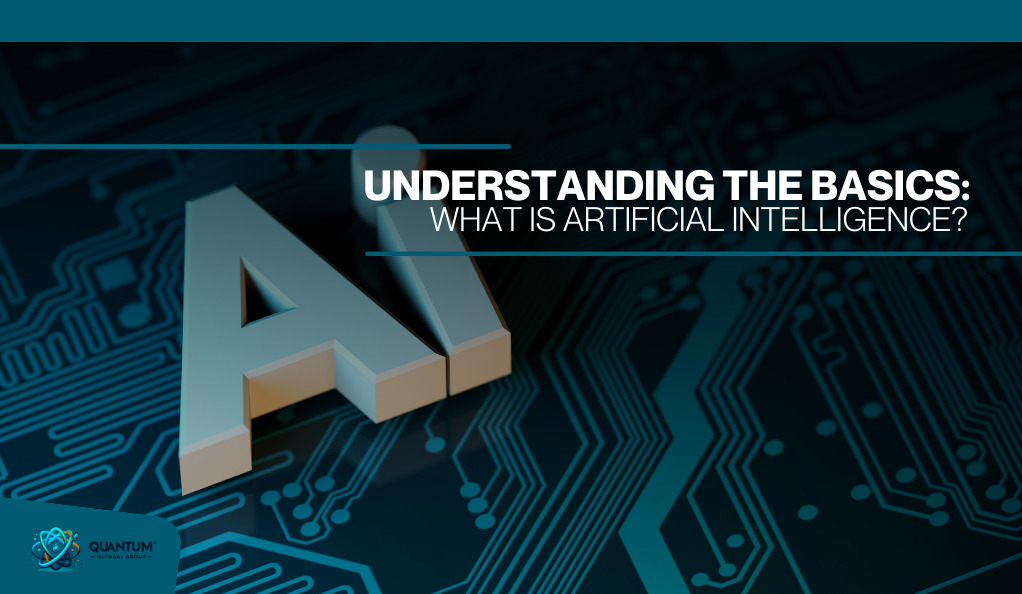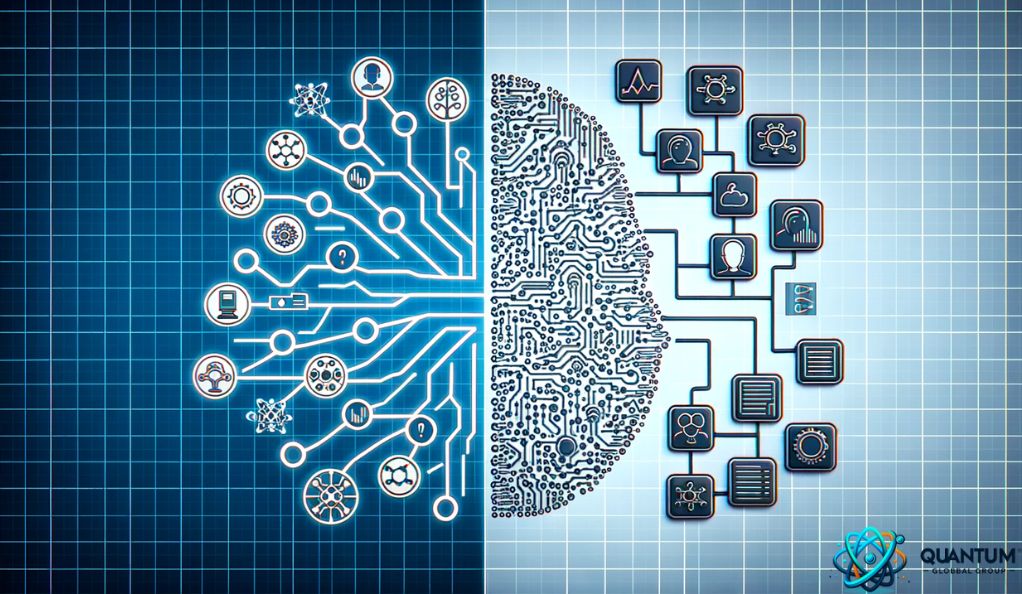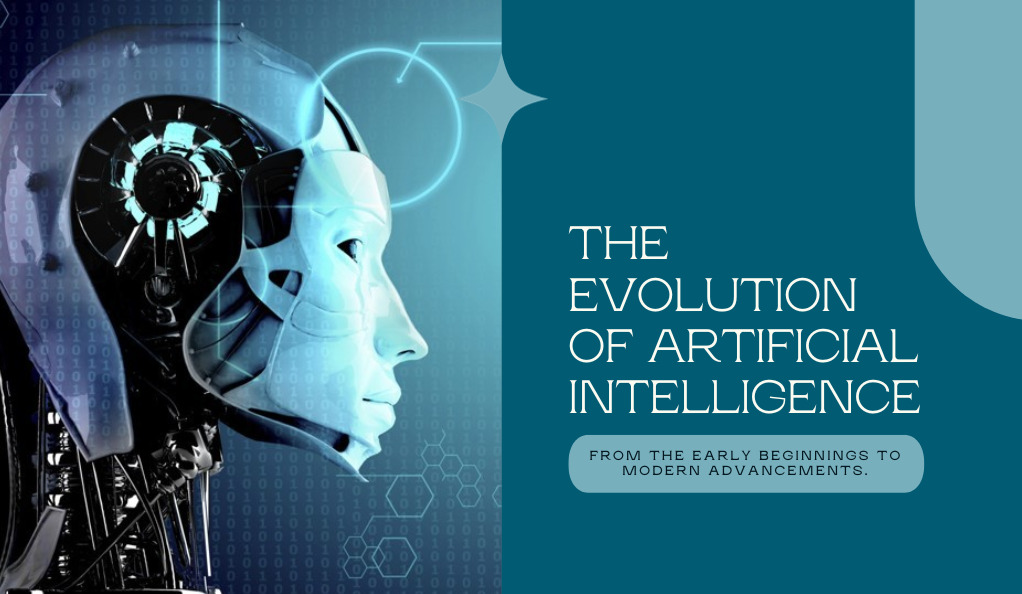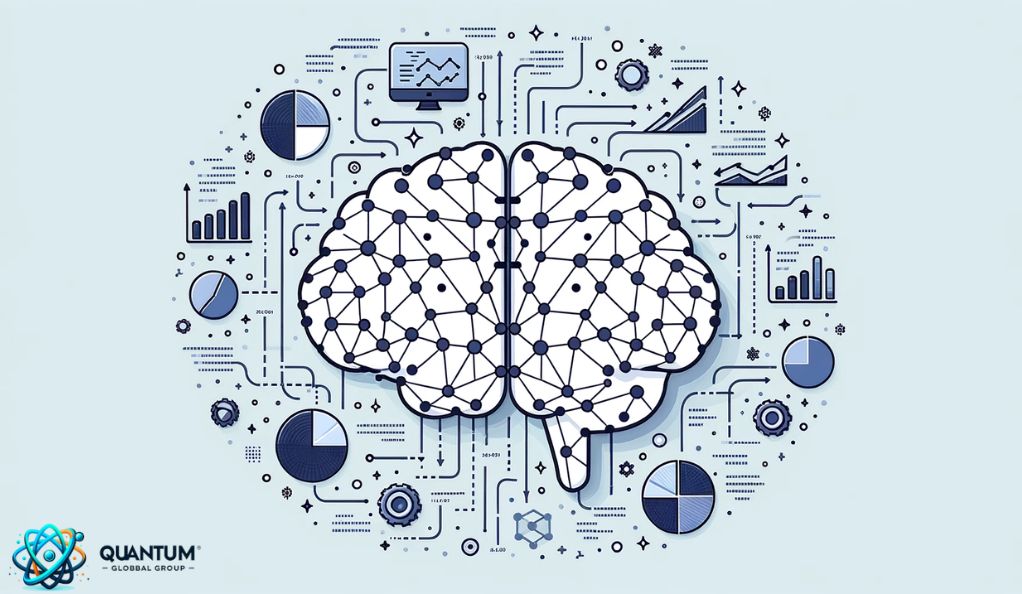Artificial Intelligence (AI) is not a concept birthed in the modern era, contrary to popular belief. Though its relevance and ubiquity have skyrocketed in recent decades, the roots of AI go much deeper. With an impact echoing in nearly every industry, from healthcare to entertainment, AI’s significance in today’s digital age is unparalleled. This section delves into the history, origin, and significance of Artificial Intelligence.
Brief History and Origin of Artificial Intelligence
Long before the first computer was ever built, philosophers mused about the idea of machines having the ability to reason. It was in ancient civilizations that the dream of automated entities, like the mythological automata of the Greeks or the mechanical servants dreamed of by the Chinese, took root.
Fast forward to the 20th century, when the term “Artificial Intelligence” was coined at a conference at Dartmouth College in 1956. This gathering of intellectuals posited that “every aspect of learning or any other feature of intelligence can in principle be so precisely described that a machine can be made to simulate it.”
Here’s a brief timeline charting some of the most pivotal moments in AI’s evolution:
| Year | Milestone |
|---|---|
| 1943 | Introduction of the first artificial neuron. |
| 1950 | Alan Turing introduces the Turing Test. |
| 1956 | Dartmouth Workshop – Birth of AI as an academic discipline. |
| 1965 | ELIZA, the first chatbot, is developed. |
| 1980 | Expert systems, a form of AI application, emerge. |
| 1997 | IBM’s Deep Blue defeats world chess champion. |
| 2011 | IBM’s Watson wins Jeopardy. |
| 2016 | AlphaGo defeats world Go champion. |
The growth of AI was not always linear. Periods termed “AI Winters” were marked by skepticism and reduced funding due to unmet expectations. However, the 21st century has witnessed a resurgence in AI, powered by better algorithms, more data, and faster computers.
The Significance of AI in Today’s Digital Age
Today, AI is more than just a buzzword or a distant dream. It’s an integral part of our daily lives. Whether it’s through voice-activated assistants like Alexa, recommendation algorithms on streaming platforms, or predictive text on our smartphones, AI enhances and streamlines our daily experiences.
AI is not just confined to consumer tech. In the broader sphere, AI plays a pivotal role in critical areas such as:
- Healthcare: From predicting patient deterioration to aiding in complex surgeries.
- Finance: Assisting in fraud detection and robo-advisory services.
- Transportation: Enabling the growth of autonomous vehicles.
The journey of AI, from its philosophical beginnings to its modern-day marvels, is a testament to human ingenuity and perseverance. As we proceed through this article, we’ll further unpack the intricacies of AI, revealing its components, applications, and future implications.
Definition and Essence of AI
As we dive deeper into understanding Artificial Intelligence, it’s imperative to begin by defining it and understanding its very essence. The term itself suggests the replication of human intelligence in machines, but there’s much more to it.
What Constitutes Artificial Intelligence?
At its core, Artificial Intelligence refers to the simulation of human intelligence processes by machines. This encompasses several activities including learning (acquiring information and the rules for using that information), reasoning (using the rules to arrive at approximate or definite conclusions), and self-correction.
It’s tempting to classify anything a computer does as AI, especially if it seems intelligent to us. However, a true AI system is expected to have the ability to:
- Perceive: Like human senses, AI systems can absorb information from the environment. This is often achieved using sensors or data input.
- Reason: Using the information they have, AI systems can determine the best course of action in a given scenario.
- Learn: AI systems are not static. They can learn and adapt from experience, which distinguishes them from simple static software programs.
- Interact: Modern AI, especially those utilizing Natural Language Processing (NLP), can understand and generate human language, allowing humans to communicate with them as they would with another person.
Difference Between AI and Traditional Computing
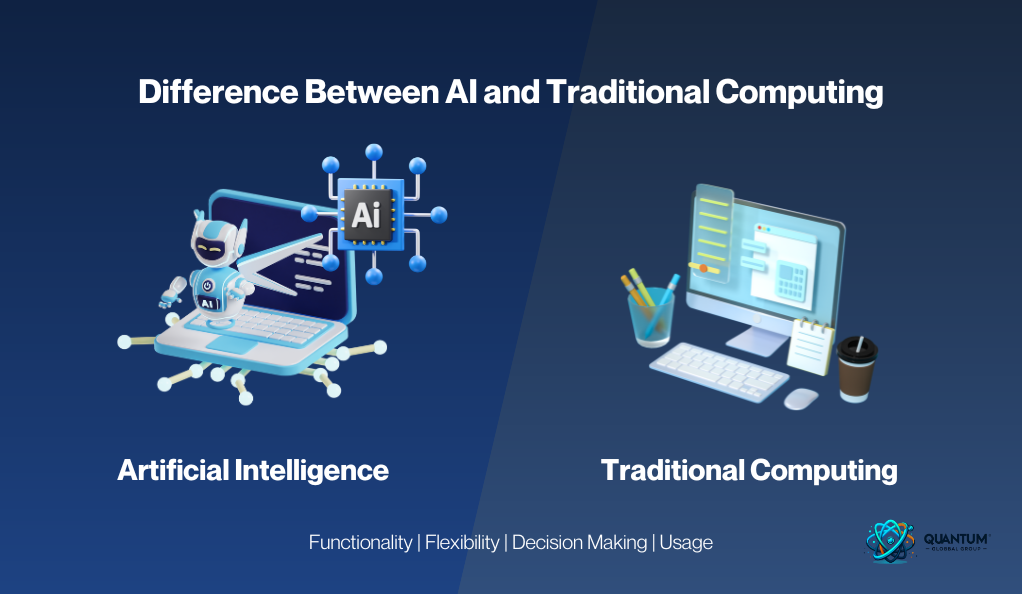
Traditional computing and AI, while intertwined, are quite different in their core functionalities.
| Criteria | Traditional Computing | Artificial Intelligence |
|---|---|---|
| Functionality | Predetermined, rule-based actions | Can learn, adapt, and predict based on data input |
| Flexibility | Static; performs the same function regardless of input | Dynamic; learns from input and can improve over time |
| Decision-making | Binary, following explicit instructions | Can make decisions based on patterns, even in the absence of explicit instructions |
| Usage | Spreadsheets, databases, basic software applications | Chatbots, recommendation systems, autonomous vehicles, etc. |
Types of Artificial Intelligence
One of the fascinating aspects of Artificial Intelligence is its vastness and versatility. AI is not a monolithic entity but a spectrum, with varying levels of complexity and capability. In this section, we’ll delve into the different types of AI and their unique characteristics.
Narrow or Weak AI vs. General or Strong AI
When discussing AI, it’s crucial to understand the difference between Narrow (or Weak) AI and General (or Strong) AI.
- Narrow (Weak) AI: These are systems designed and trained for a particular task. Virtual personal assistants, like Siri or Alexa, are examples of narrow AI. They operate under a pre-defined set or patterns and don’t possess consciousness or emotions.
- General (Strong) AI: This form of AI would have all the human capabilities. It would be able to perform any intellectual task that a human can. It’s more theoretical at the moment, as we are yet to create machines that can fully replicate the intricacies of human cognition.
Machine Learning, Deep Learning, and Neural Networks
Machine Learning (ML) is often used interchangeably with AI, but it’s a subset of AI. ML provides systems the ability to automatically learn and improve from experience without being explicitly programmed.
- Machine Learning: It involves algorithms that allow computers to perform a task without explicit instructions. For instance, recommendation systems on platforms like Netflix or Spotify use ML to suggest content.
- Deep Learning: A subset of ML, deep learning imitates the working of the human brain using something called neural networks. It can process vast amounts of data, making it crucial for tasks like image and voice recognition.
- Neural Networks: These are algorithms designed to recognize patterns. They interpret sensory data through a kind of machine perception, labeling, or clustering of raw input.
Natural Language Processing and Robotics
- Natural Language Processing (NLP): A domain of AI that focuses on the interaction between computers and humans through the natural language. The ultimate objective is to read, decipher, and make sense of the human languages in a valuable way. Chatbots and translation services often employ NLP.
- Robotics: This field involves creating robots, which are AI systems that can perform tasks in the real world. From manufacturing robots to the Roomba that cleans your home, robotics represents a tangible manifestation of AI.
Components Powering AI
Behind the often seamless operations of AI lies a complex web of components. These elements, both tangible and intangible, come together to give AI its power, precision, and potential. In this section, we will explore the vital components that fuel the magic of Artificial Intelligence.
Algorithms and Data: The Heart and Soul of AI
- Algorithms: At the heart of AI are algorithms, which are sets of rules or instructions that dictate the behavior of AI. They range from simple decision trees to complex neural networks. The choice of algorithm often depends on the type of data, the task at hand, and the desired outcome.
- Data: Data is the lifeblood of AI. The quality and quantity of data directly influence the performance of an AI system. Through data, AI systems learn, refine their operations, and make predictions. It encompasses structured data (like databases) and unstructured data (like text or images).
Hardware: CPUs, GPUs, and TPUs
Modern AI, especially deep learning models, require immense computational power. This power is delivered by specialized hardware components:
- CPUs (Central Processing Units): These are general-purpose processors found in most electronic devices. While they can run AI algorithms, their general-purpose nature means they aren’t always the fastest or most efficient option for complex AI tasks.
- GPUs (Graphics Processing Units): Originally designed for rendering graphics, GPUs have found a new role in AI because of their ability to handle multiple computations simultaneously. This parallel processing capability makes them particularly suited for training large neural networks.
- TPUs (Tensor Processing Units): Google’s custom-developed application-specific integrated circuits (ASICs) optimized for machine learning tasks. They are designed to accelerate both the training and execution of deep neural networks.
Cloud and Edge Computing
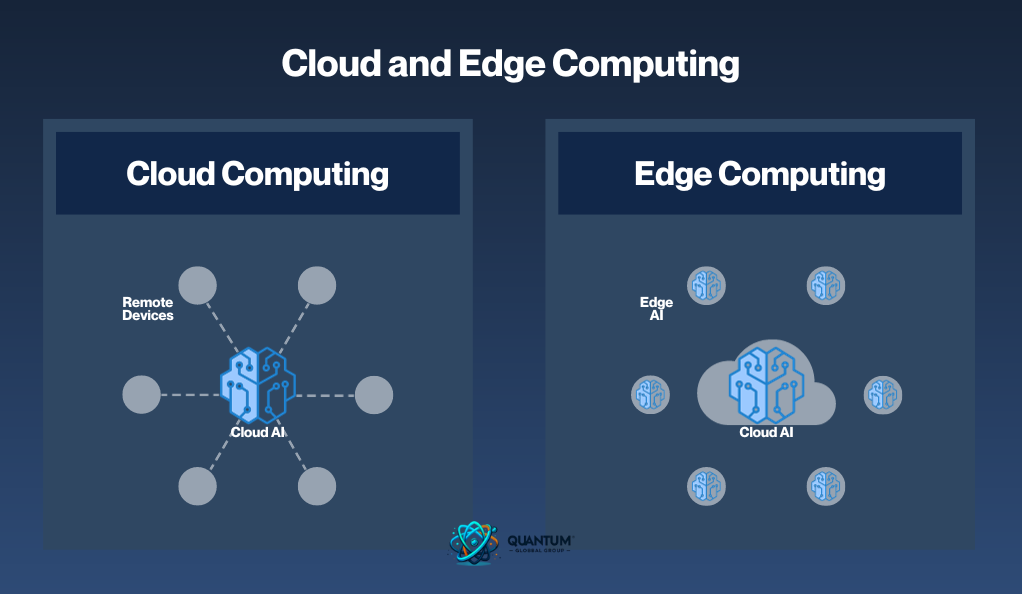
As AI systems become more integrated into daily life, the locations where AI processes its data have become increasingly important:
- Cloud Computing: This involves processing data over the internet in a remote data center. Cloud platforms, like AWS, Google Cloud, and Microsoft Azure, offer vast computational power and storage, making it easier for businesses and developers to deploy AI systems.
- Edge Computing: Instead of sending data to a remote server for processing, edge computing processes data locally, on the device itself or a local server. This is vital for applications where latency is a concern, like autonomous vehicles or industrial robots.
Applications of AI: Where is AI Making a Difference?
The advancements in AI have opened up a world of possibilities, transcending industry borders and permeating various facets of our daily lives. From enhancing user experiences to revolutionizing industries, let’s delve into the myriad ways AI is making its mark.
Healthcare: Diagnosis, Treatment, and Research
- Diagnostic Procedures: AI tools can rapidly analyze medical images for signs of diseases like cancer, often with accuracy matching or exceeding human experts. For instance, Google’s DeepMind has developed an AI that can spot eye diseases in scans.
- Personalized Treatment: AI algorithms analyze a patient’s medical history and suggest personalized treatment plans, increasing the efficacy of treatments.
- Drug Discovery and Research: AI can predict how different chemicals can interact. This accelerates drug discovery processes, making them more cost-effective and efficient.
Finance: Risk Management, Fraud Detection, and Robo-advisors
- Fraud Detection: AI systems constantly monitor transaction activities, flagging unusual patterns or behaviors, thus helping in early detection of fraud.
- Robo-advisors: These automated platforms provide financial advice or investment management online with minimal human intervention, making wealth management services more accessible.
- Credit Scoring: Using a plethora of data, AI can provide more nuanced credit scores, allowing lenders to make better-informed decisions.
Entertainment: Recommendation Systems and Content Creation
- Recommendation Systems: Platforms like Netflix and Spotify use AI to analyze user preferences and behavior, subsequently offering tailored content recommendations.
- Content Creation: AI tools are being used to create music, video content, and even scripts. For instance, the script for the short film “Sunspring” was written by an AI.
Retail: Personalization, Inventory Management, and Chatbots
- Personalized Shopping Experience: Online retailers use AI to analyze shopping behaviors, providing personalized shopping experiences with product recommendations that cater to individual preferences.
- Inventory Management: AI helps in forecasting inventory demand, optimizing stock levels, and reducing waste.
- Chatbots: These AI-driven assistants provide instant customer support, handle inquiries, and even assist in the shopping process.
Transportation: Autonomous Vehicles and Traffic Management
- Autonomous Vehicles: Companies like Tesla and Waymo are at the forefront of developing self-driving cars, relying heavily on AI for navigation, collision avoidance, and decision-making.
- Traffic Management: AI algorithms analyze traffic in real-time, optimizing traffic light timings and providing route suggestions to reduce congestion.
Ethical Implications: Navigating the Challenges of AI
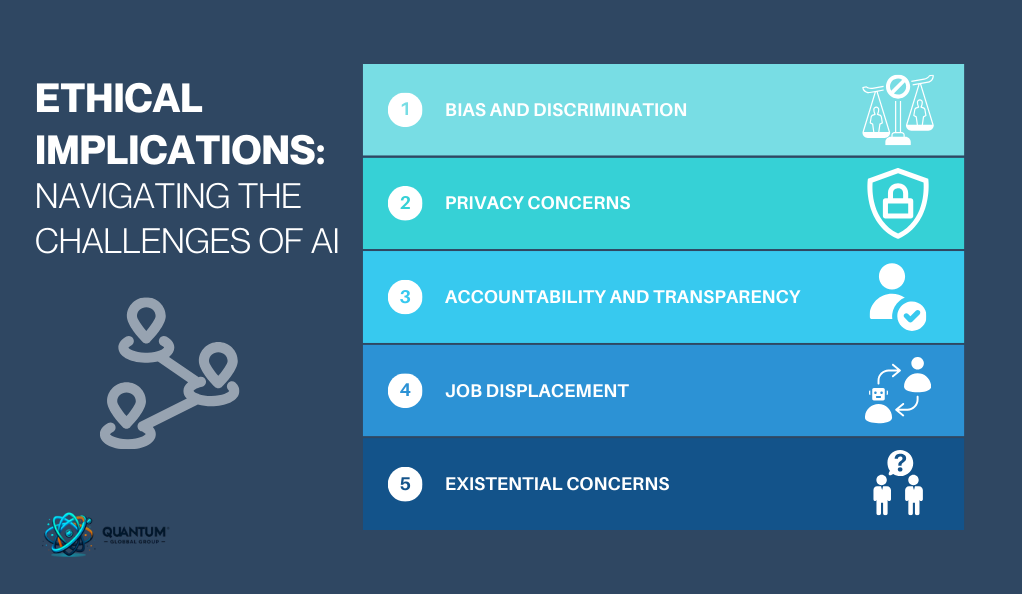
With the expansive growth and applications of AI come significant ethical concerns. While AI holds tremendous potential, it also presents challenges that society must grapple with to ensure its responsible and equitable use.
Bias and Discrimination
- Inherent Biases: AI systems are trained on data. If this data contains biases, the AI can perpetuate or even exacerbate these biases. For instance, facial recognition technologies have been found to have disparities in accuracy across different ethnic groups.
- Decision-making Implications: Biased AI can lead to unfair decisions in areas like hiring, law enforcement, and lending, among others.
Privacy Concerns
- Data Collection: Many AI systems, especially in sectors like retail and entertainment, rely on collecting vast amounts of personal data. The collection, storage, and usage of such data raise valid privacy concerns.
- Surveillance: AI-powered surveillance systems, like those used in public spaces or by governments, can lead to intrusive monitoring, impacting personal freedoms and privacy.
Accountability and Transparency
- Black Box Dilemma: Some AI models, especially deep learning models, are complex and not easily interpretable. This lack of transparency, often referred to as the “black box” nature of AI, raises questions about accountability.
- Decision-making Scrutiny: If an AI system makes a wrong or harmful decision, who is to be held accountable? The developers, the users, or the machine itself?
Job Displacement
- Automation: As AI systems become more adept at tasks, there’s a growing concern about machines replacing human jobs, especially in sectors like manufacturing, customer service, and even some white-collar jobs.
- Reskilling Challenge: While AI might render some jobs obsolete, it will also create new ones. The challenge lies in reskilling the workforce to fit these new roles.
Existential Concerns
- Superintelligent AI: There’s a theoretical concern about developing an AI that surpasses human intelligence. Such an entity, if not aligned with human values, could pose existential risks.
- Dependency: As society becomes more reliant on AI systems, there’s a danger of becoming overly dependent, potentially leading to vulnerabilities in case of system failures.
Conclusion
Artificial Intelligence, with its vast implications and transformative power, represents both a beacon of progress and a challenge of responsibility. Like many innovations before it, AI offers unmatched potential but also raises ethical dilemmas. Its successful integration into society requires collaborative efforts, blending technological advancements with ethical frameworks.
A well-informed public, combined with accountable and transparent development practices, will be pivotal in ensuring AI’s harmonious alignment with human values. As we stand at this technological crossroads, it is imperative that our journey with AI be guided by both curiosity and prudence, ensuring its role as a tool for equitable and sustainable progress.

